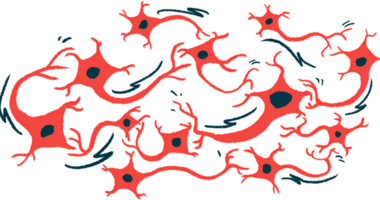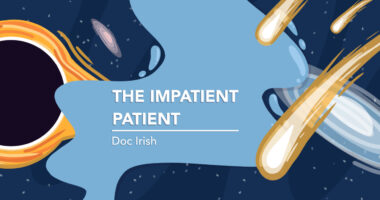Parkinson’s therapy ARV-102 able to reach brain, where needed: Study
Arvinas treatment candidate shown to be safe in healthy volunteers, patients

ARV-102, an oral therapy Arvinas is developing for people with Parkinson’s disease, was shown to reach the brain — where it is needed — and to be safe and well tolerated over two weeks in clinical studies with healthy volunteers and patients.
In the volunteers taking part in the Phase 1 study, once-daily dosing with ARV-102 reduced biomarkers of damaged lysosomes, which are the structures that break down waste products — such as the misfolded alpha-synuclein protein that is a hallmark of Parkinson’s — in the body. The experimental therapy also reduced the inflammatory status of microglia, the brain’s resident immune cells.
These findings were shared by the developer last week at the Movement Disorders Society (MDS) International Congress of Parkinson’s Disease and Movement Disorders, held in Honolulu. The data were presented in a poster titled “First-in-Human Study to Assess the Safety, Pharmacokinetics, and Pharmacodynamics of Single and Multiple Ascending Doses of ARV-102, a PROTAC LRRK2 Degrader, in Healthy Participants,” and in a separate late-breaking abstract.
“We believe these findings support the intensified development of ARV-102 in ongoing studies of patients with Parkinson’s disease,” Noah Berkowitz, MD, PhD, chief medical officer of Arvinas, said in a company press release detailing the presentations.
Mutations in the LRRK2 gene are a common genetic cause of Parkinson’s, a progressive disease where the gradual loss of nerve cells in the brain leads to impaired control in motor function. The LRRK2 gene encodes a protein of the same name, which is often overactive in Parkinson’s.
First-in-human study of ARV-102 tested therapy in healthy volunteers
ARV-102 is a so-called PROTAC degrader designed to mark LRRK2 for breakdown in cells. A PROTAC is a type of small-molecule drug that works by harnessing the cell’s natural protein degradation system to selectively eliminate disease-causing proteins, instead of simply blocking them.
When overactive, LRRK2 can disrupt waste recycling by lysosomes and potentiate the inflammatory status of microglia, causing damage to nerve cells. Clearing up LRRK2 is therefore expected to slow Parkinson’s progression.
The first-in-human clinical study of ARV-102 involved 90 healthy men. It included a first part with single ascending doses of 10 to 200 mg, and a second part with once-daily doses of 10 to 80 mg for 14 days, or about two weeks. ARV-102 was well tolerated, with no serious side effects.
Levels of ARV-102 present in the blood and the cerebrospinal fluid (CSF) — the liquid that surrounds the brain and spinal cord — increased in a dose-dependent manner, showing it could reach the brain. This is important because the body has certain protective mechanisms, designed to prevent bacteria and harmful substances from reaching the brain, that block medications from getting where they are needed.
Repeated daily doses of 20 mg or higher reduced levels of LRRK2 by more than 90% in blood cells and by more than 50% in the CSF, the data showed.
In patients, treatment reduced levels of LRRK2 protein
Daily dosing also reduced blood and urinary biomarkers of lyosomal damage, showing that ARV-102 engages its target and achieves “substantial … LRRK2 degradation and pathway engagement,” the researchers wrote.
For John Houston, PhD, Arvinas’ chair, CEO, and president, this is “to our knowledge, … the first time an investigational LRRK2 therapy has, at 14 days in healthy volunteers, shown effects on distal pathway biomarkers in CSF that are elevated in patients with LRRK2 Parkinson’s disease.”
Building on these findings, the company launched a Phase 1 clinical study (EUCT 2024-516888-84-00) that has enrolled 19 adults with Parkinson’s. The participants were randomly assigned to receive ARV-102 — at single doses of 50 or 200 mg — or a placebo. A total of 15 patients received ARV-102, while four were given the placebo.
The results, presented in the late-breaking abstract titled “First Clinical Trials of ARV-102, a PROTAC LRRK2 Degrader: Characterization of Pathway Engagement in Healthy Volunteers and Patients With Parkinson’s Disease,” showed that both doses of ARV-102 were well tolerated. Only mild side effects were seen, among them headache, diarrhea, and nausea, according to the researchers.
Data showed that levels of ARV-102 increased in a dose-dependent manner in both the blood and CSF, demonstrating that it reached the brain in these Parkinson’s patients.
“We are particularly excited by the CSF proteomics [protein study] results, which demonstrate modulation of lysosomal and microglial pathways that are known to be associated with neurodegenerative diseases,” Berkowitz said.
Additional data from ARV-102 study expected by next year
As seen in the healthy adults, treatment with ARV-102 in people with Parkinson’s reduced levels of LRRK2 in blood cells, by a median of 86% at 50 mg and by 97% at 200 mg. The company noted that findings from patients assigned to receive multiple doses are expected by next year.
If those findings are positive and the company receives regulatory clearance, Arvinas plans to start testing ARV-102 in other conditions. The company said it would begin clinical testing of the therapy in the first half of next year in people with progressive supranuclear palsy, a neurodegenerative disease also caused by the accumulation of misfolded protein products.








